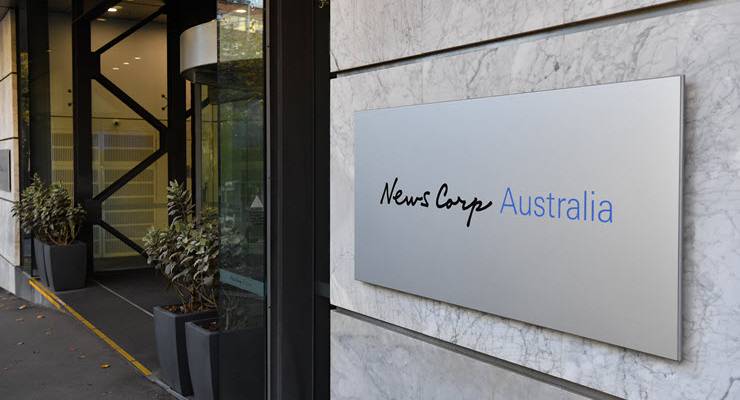
It’s coming up to a year since News Corp literally stopped the presses on most of its community and regional newspapers. Now, it’s taking the next step of integrating the local mastheads into its state-based brands like the Herald Sun or The Daily Telegraph.
It’s all about scale — about hanging on to the benefits that “mass” once delivered news media conglomerates. Behind those brands, News Corp shares news content across its state-based tabloids through its News+ network. It’s journalistically tricky: how to hold on to the locally-focused readers (and locally interested advertisers) with an increasingly national product.
Tracking reader behaviour
Like the big-tech social media platforms, the company relies on tracking reader behaviour online to meet its commitment to match advertisers with a relevant audience. It’s particularly important for the company’s core business — real estate advertising through its most profitable segment, realestate.com.au.
As the company’s website puts it: “NewsLocal brands are integrated online under the powerful [insert state tabloid] brand. This provides advertisers with the opportunity to connect with local readers under a powerful masthead and then reach customers with diverse search and consumption habits.”
A handful of its local mastheads — those serving wealthy (and real estate-focused) communities like Sydney’s eastern suburbs or Melbourne’s bayside — continue in print, integrated (from an advertising perspective) into the News Prestige Network, which “delivers elite audiences at scale across our suite of influential prestige brands” such as Vogue and GQ or Wish, a monthly insert in The Australian.
Financially, the close-and-integrate decision looks like being a wash for the Delaware-based company. Its financial reports so far suggest it has cost the company about $200 million in revenues over the past 12 months and has saved a bit more than that in ongoing costs.
Subscribers (or would-be subscribers) of once separate mastheads (say, The Gympie Times) will feed into the circulation numbers of their state tabloid (in this case, The Courier-Mail). The company will be assuming that the additional content on offer from the News+ network will justify the higher subscription costs.
In this case, the regional subscriber will pay $28 every four weeks, compared with $15 for a standalone payment to a regional paper like the ACM-owned Albury The Border Mail.
Which plan is better?
It will be some time before we know which plan works best. In its quarterly figures (next due out tomorrow), News Corp usually announces an Australia-wide total of digital subscriptions (expect about 780,000). It releases masthead by masthead figures on digital and print subscriptions for the tabloids in its annual 10-K report to the US Securities and Exchange Commission, due in August.
The challenge for the News Corp model of integrating to deliver scale is that it puts it head to head with the micro-targeting experts — Facebook and Google — and from an advertising point of view it looks like those tech platforms do a better job.
Like all owners of traditional local outlets, News Corp is struggling. It’s the most disrupted sector of news media. That’s a shock because, in those pre-internet days, it was the sector best optimised for the services that news media provided to both audiences and to advertisers.
The News Corp approach to putting a local screen over a national product is at odds with how other local media around the world are thinking about their product and their audience. It’s hard-headed but short-term transactionalism, when more successful players are leveraging relationships and community building.
Australia’s other local news player, ACM, is trying to walk both sides — delivering a transactional value while engaging its community.
There are bright spots in towns and some inner-city suburbs (and in some virtual communities) as new players are turning the News approach on its head. Rather than reporting commodified, often national or state-based news, they reflect and create their communities with both a journalistic and a business understanding of the intricacies of what’s happening locally.
They bring a diversity by embedding themselves in the community, by looking like the community, and by being their community’s champion. It’s delivering a journalism of service that holds local institutions to account and provides difficult-to-access information rather than a reporting for the record, differentiating themselves by going deep rather than fast coverage of spot news.
It’s a big ask to get it right. But the strength of local communities depend on it.
What do you think about the road News Corp is taking with its “local” titles? Let us know your thoughts by writing to letters@crikey.com.au. Please include your full name to be considered for publication in Crikey’s Your Say section.








Thanx for this.
My local news’paper’ the Toronto Star has recently added a ‘My local’ tab on its web site to read the local news on the community one chooses from its drop down menu.